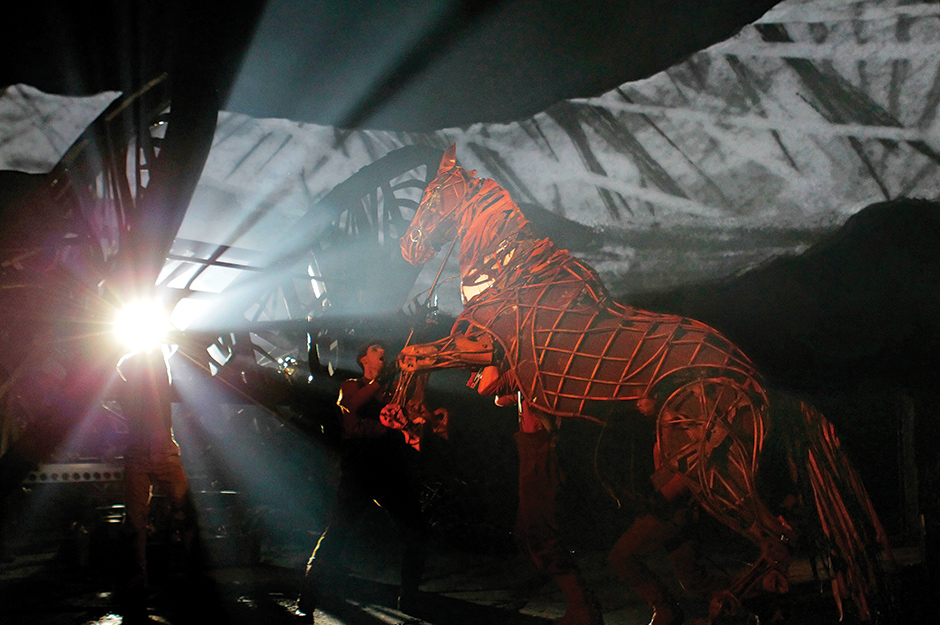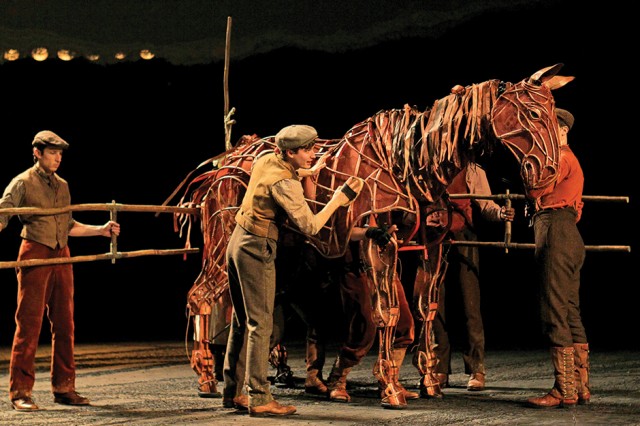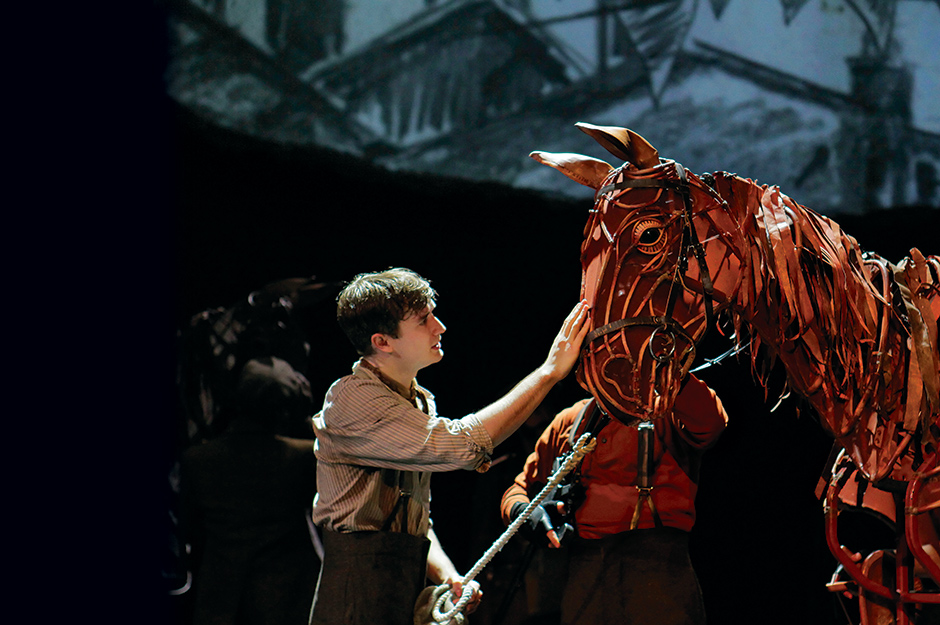PHOTOS BY Paul Kolnik
After years of resounding success at New York City’s Lincoln Center and an Oscar nod for the Spielberg film adaptation, War Horse is packing up its puppets and taking to the road. War Horse on Broadway gained international attention as well as five Tony Awards in 2011, including Best Direction and Best Play. Now War Horse puppets will come to life in more than 25 cities around the country throughout 2012 and 2013.
EQ Goes Backstage
Just as War Horse was about to set off on its nationwide tour this spring, EQ was invited backstage for an inside look at the puppets and the people that transform them. After joining the audience and watching the show, I stepped into the room where the team of puppeteers sat, still wiping away tears and finding my composure after the moving performance.

I had spent the last two hours falling in love with Joey, the horse. Now the lifeless puppet lay in front of me, larger than life-size, and hand-made from aluminum, warped cane, nylon mesh, and leather. Made by the Handspring Puppet Company, located in South Africa, a puppet takes a team of ten craftsmen over six months to create. It is not particularly realistic at first glance, but the first time you see it move, its emotion becomes so realistic, you could swear you saw its muscles quiver and eyes widen. It takes a only a few minutes to forget that it is only moveable frame, a sort of three-dimensional sketch, in which our imaginations fill the details.
As I sit to talk with the puppeteer team, they introduce themselves as the “head, heart, and hind.” The “head,” who stands near the horse’s shoulder on stage, appears to be leading the horse and controls the horse’s focus through its ears, which move separately, and its chin. The “heart” stands within the puppet, and moves the front legs, creating the illusion of the horse’s breath by lifting the body subtly, up and down. Finally, the “hind” stands in the rear of the puppet, attached to the actor in front of him through the aluminum spine of the horse. One of the puppeteers, Joby Earle, explains “The goal is to have every decision of the horse be made as a team, measured in milliseconds. It’s not magic, but it is exhilarating when it happens. But because we are unable to speak while inside the horse, each horse team solves the problem of communication differently. Some use breath cues, shifts in weight, and vocalizations of the horse to help to set a movement into action.”

See it and react. The energy transfers from one puppeteer to the next the way a message from the brain is transmitted through the body, and the reaction of a turned ear might follow a hand’s touch to the flanks by only a split second.
THINKING LIKE A HORSE
In effect, each actor is thinking like a horse. I asked how did they learn to portray a horse’s behavior so accurately? “A lot of research,” says Ariel Heller, another of the play’s puppeteers. “We have visited horse farms, learned to ride, and studied literature and videos.” For example, when Joey is made to pull a heavy plow, the actors must emote the strength required, and believably represent the movement of this power from the horses rear hooves up through the neck and shoulders. The actors found a video of a horse pulling weight, and studied the physics that made it possible. “Still, it’s not just a matter of mechanics,” says team member, Enrico Wey, “A lot of our research focuses on psychology.”
One of the places the cast began was with a documentary about Monty Roberts, the famed Horse Whisperer and expert horse behaviorist. From this film, the puppeteers learned about the relationship between horses and humans, and about the huge amount of information that a horse sends out through its stance, its ears, its vocalizations, and its movements. Puppeteer Joby Earle explains, “A horse in distress is looking for a leader. They’re a herd animal and they are looking to join up. So when we’re playing the horse, we are always trying to decide what is the safest place, whether we can trust who we’re with or if we should flee.” In many ways, this behavior shapes the play, and what ultimately makes the story of a boy and his horse so compelling.
As War Horse travels through your town, be sure not to miss the opportunity of experiencing the magic for yourself. Any of us who has loved an animal cannot help but be moved by what is a truly unique production.
See www.warhorseonstage.com for tour details.
Four teams of actors rotate through the cast, playing each horse twice per week. The constantly changing combinations of personalities are so varied that each performance is inevitably an interplay of untested dynamics and circumstances.
Published Fall 2012

